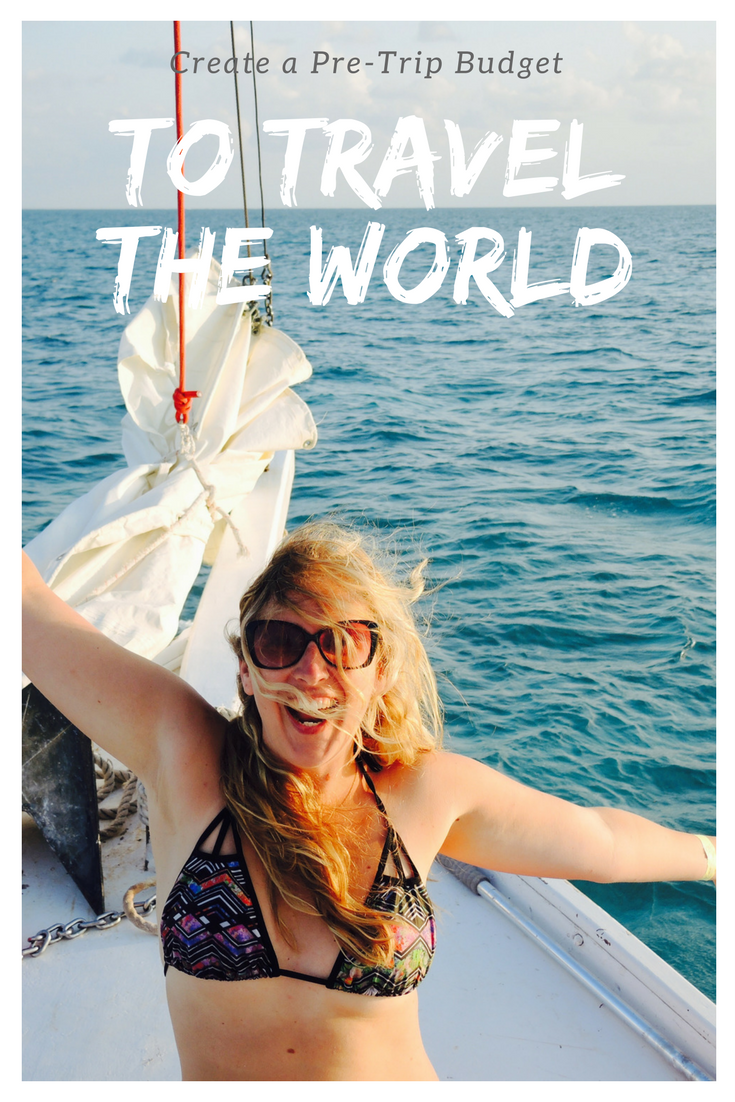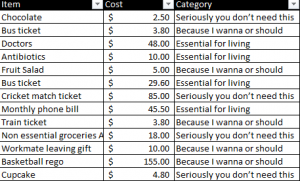You are dreaming of a trip, you have made the decision to go, well now its time to review your budget before you start saving!
Budgets – they always start with the best intentions, then slowly those intentions are forgotten as we wander through shops filled with shiny things, or head out for a dinner and decide to have just one more bottle of that REALLY nice wine. The trick when saving for a trip is to continue living in the place that you are. If it becomes all about the saving, you run the risk of wasting time. Travelling is all about appreciating time – don’t wait until you are on a plane to start.
Step One: Divide and conquer
Set up a savings account that is separate from your spending’s account. My savings account doesn’t have a card attached to it and can only be accessed by transferring the money into my spending’s account. This means that when the money has run out after a few glasses of wine I have to think REALLY hard about whether I want to transfer some money to have another. Most times it’s the signal for bed.
Step Two: Reduce your big budget items
- Rent/mortgage – can you move somewhere cheaper until you leave? If you have a mortgage can you rent your place out and downsize?
- Phone – can you bundle your phone and internet bill to get a cheaper deal?
- Gym – do you go every day, could you do your exercise outside or use YouTube videos instead?
- Extras – go through your bills and see if there are things you don’t need, PayTV, large broadband, personal trainer etc?
Remember to do what’s right for you, and also be realistic. If you have a gym membership but only go once a week, is it really worth the cost? If however, you go every evening and hardly ever watch TV, do you really need PayTV? Work out what the difference is between your old life Big Budget Items and your new life Big Budget Items and put that difference straight into your savings account!
Step Three: Sweat the small stuff
Before you create your budget, take stock of your weekly spending. To do this you can use one of the free apps such as TrackMySpend or if you are a little old school like me – a spreadsheet will suffice.
For a week I tracked everything I bought, right down to that after lunch chocolate and those three glasses of wine on a Friday. Afterwards, I reviewed everything and put it into three categories
1. Essential for living
The bare essentials. Things like groceries, sun cream (I live in Australia after all), doctors and bus tickets. This only came to $249.10. If I am honest I wasn’t stingy when I was grocery shopping, if I thought things through a bit better and planned things ahead I could probably shave off another $50.The cheapest things to buy are vegetables so I may get in touch with my inner vegetarian.
2. Moderately needed/wanted
This category hit a massive $310.80! At the time all of these items felt like they were essential but in retrospect… eh… maybe not. I could have definitely walked on the days I lazily took the bus home. Team lunches are important for workplace bonding, so they are almost essential – but maybe I will have the cheap soup next time. Sometimes a budget can also help you make healthier food choices as well.
3. Definitely not needed
$173.20 of stuff I clearly didn’t need – or even want that badly. A sneaky doughnut forced me to do an extra Zumba class, the cheese and crackers evening was tasty, but maybe a triple cream brie could be exchanged for my famous avocado dip (at a 3rd of the cost). The thing I regret the most was the takeaway Chinese, it left me feeling blah for days, so blah I didn’t even want the left over’s.
After identifying the areas where I was overspending I worked out that I could probably save an extra $300. I wrote up a little list of things I wasn’t allowed to do (no after lunch chocolate) and stuck it on the back of my wallet – just as a friendly reminder.
Step Four: Review!
Has your bank account grown? If so – congratulations! Now that you have gotten used to this reduced lifestyle, is there more you can cut? Could you save another $50?
Or have you been finding that you have been dipping into that savings account every week? If so do another week of tracking your spending and work out where you are overspending – maybe you went on a shopping spree? Or are you going out on nice dates? Whatever the reason, if the habit isn’t going to change, build it into your budget and maybe look at another area where you could cut back.
Step 5: You aren’t the first!
There are loads of resources out there to help you work out what is right for you in your budget.
- Nomadic Matt is one of the best in the business at budget travel hacking
- Ordinary Traveller, a couple who have been travelling the world for years – 10 Tips on How to Save For Travel
- yTravel is one of my favourite blogs – check out their resources page
- Goats on the Road have some more great ideas which include starting a second job or working overtime.
And there are even more stories of people who have done it, made the cutbacks and saved a bundle
- How Michael Saved $14k in 6 Months Making $9 Per Hour
- How Adventurous Kate Saved $13,000 For Travel In Just Seven Months
- Elliot Peper – How to afford a 6-month globe-trotting sabbatical
- Jodi from Legal Nomads is a wealth of tips and inspiration
Just remember not to deprive yourself of the things that make you happy – otherwise, you won’t be able to maintain it and you may start to resent your upcoming trip. Life needs to be lived – even while you are saving!





Comments
Pingback: How to Create your Priority List for Travel - The Lite Backpacker
Pingback: 5 ways to Easily Sell your Stuff Before you go Travel the World